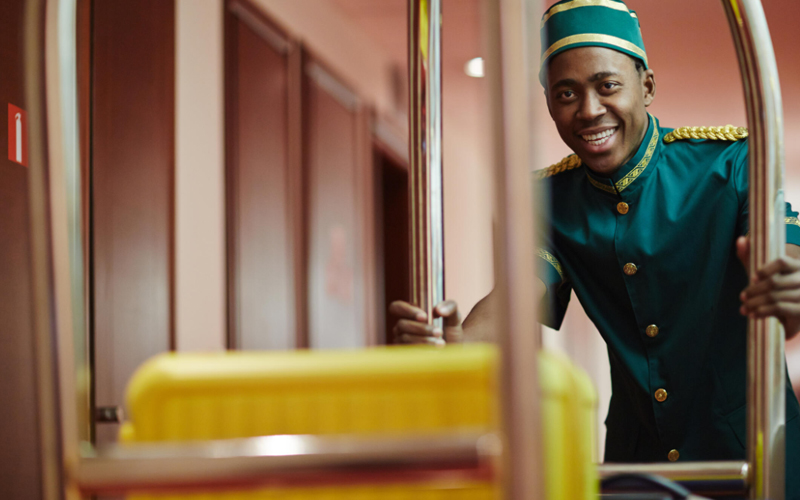The travel and tourism industry was once largely experience-driven only after travellers reached their destination. Before setting out on their journey, tourists would depend on glossy catalogues, travel-agent recommendations and brochures to make travel-related decisions. Those days are now a thing of the past. Today, technology is reshaping every stage of travel. In particular, technologies such as Augmented Reality (AR) and Virtual Reality (VR) have been taking confident strides in the sector, transforming the way people explore, plan and experience travel.
So, what exactly is the AR/VR buzz all about? AR blends the real and the virtual. It is a technology that adds digital elements like images, sounds or information, onto the physical world around us. On the other hand, VR or Virtual Reality is a technology that creates a completely computer-generated world that transports you to an entirely different environment. Put on a VR headset and you could find yourself exploring Mars or the Moon, all without leaving your room!
Whether it is the planning process for a trip, exploring a destination, or actually enjoying the experience itself, AR and VR have become an integral part of every stage of travel. Let us look at some of the ways the two technologies have been making a mark and redefining the ways we see and experience the world.
- planning: With endless information at their fingertips, most tourists conduct extensive research before planning a trip. At this stage, AR and VR help in the decision-making process. Hotels, airlines, and travel destinations can provide guests with virtual tours and show them the facilities, the room options, and the amenities available. Imagine walking through the lobby of a resort or visualizing the sunset view from a room in the resort, even before arriving at the destination. All this and more are possible through AR and VR, both of which help in making a significant impact in the pre-travel phase for tourists.
- navigation: When a tourist arrives at a new place, it can often be intimidating to find one’s way around the place. Foreign languages and unfamiliar streets, among other things, can make it hard to know where to start. This is where AR and VR step in as smart travel companions. This can help them become comfortable and familiar with a new place quickly. Travelers who have AR-enabled navigation apps can point their smartphone cameras at their surroundings to instantly see restaurant reviews, directions to specific places of interest, and even real-time translation of street signs.
- communication and translation: When tourists do not understand or speak the local language of the place they are visiting, it can be quite challenging to communicate and manage day-to-day activities. AR devices, such as smart glasses or mobile apps, provide real-time translation of foreign text (e.g., signs, menus, etc) by overlaying translated information directly onto the user’s view. This eliminates the need for tourists to look up specific words, which could be time-consuming and tedious. Not only that, VR environments enable tourists to engage in simulated conversations with native speakers to get a feel of the place and improve language skills before traveling.
- virtual tourism: There are many people who are unable to travel due to high costs, their own physical limitations or disabilities, or many other reasons. This is where virtual tourism helps. The global virtual tourism market is predicted to register a CAGR of 30.2% from 2025 to 2033. It combines tourism with technologies such as VR headsets, AR apps, 360-degree videos and AI-driven guides to create a sense of presence. It acts as a powerful marketing tool that can be used by destinations or travel operators to give potential travellers a feel of the place and entice bookings. It also acts as a way to enhance actual travel by offering virtual rides or experiences of interactive museum exhibits. Some examples of museums and cultural sites that use AR/VR to enhance the visitor’s experience, offer more interactivity, and boost educational value are the Smithsonian National Museum of Natural History, Washington, D.C. and the National Museum of Singapore.
what the future holds
Mark Zuckerberg, the CEO of Meta once said:
“Virtual Reality is really a new communication platform. By feeling truly present, you can share unbounded spaces and experiences with the people in your life. Imagine sharing not just moments with your friends online, but entire experiences and adventures.”
With the rapid advancement of AR and VR, the world has truly become the oyster — both literally and figuratively — for the travel and hospitality industry by opening new dimensions of experience and engagement. The potential of AR/VR in tourism is limitless. These technologies offer tourists immersive and interactive experiences as they turn every journey into unforgettable memories.
how Infosys BPM can help?
The travel and hospitality industry is navigating a dynamic environment that is marked by rising costs, fierce competition, sustainability imperatives, and ever-evolving customer expectations.Infosys BPM is uniquely positioned to help organizations overcome these challenges.
By combining deep industry expertise with advanced digital technologies, we deliver solutions that streamline operations, boost efficiency, and elevate customer experiences.







